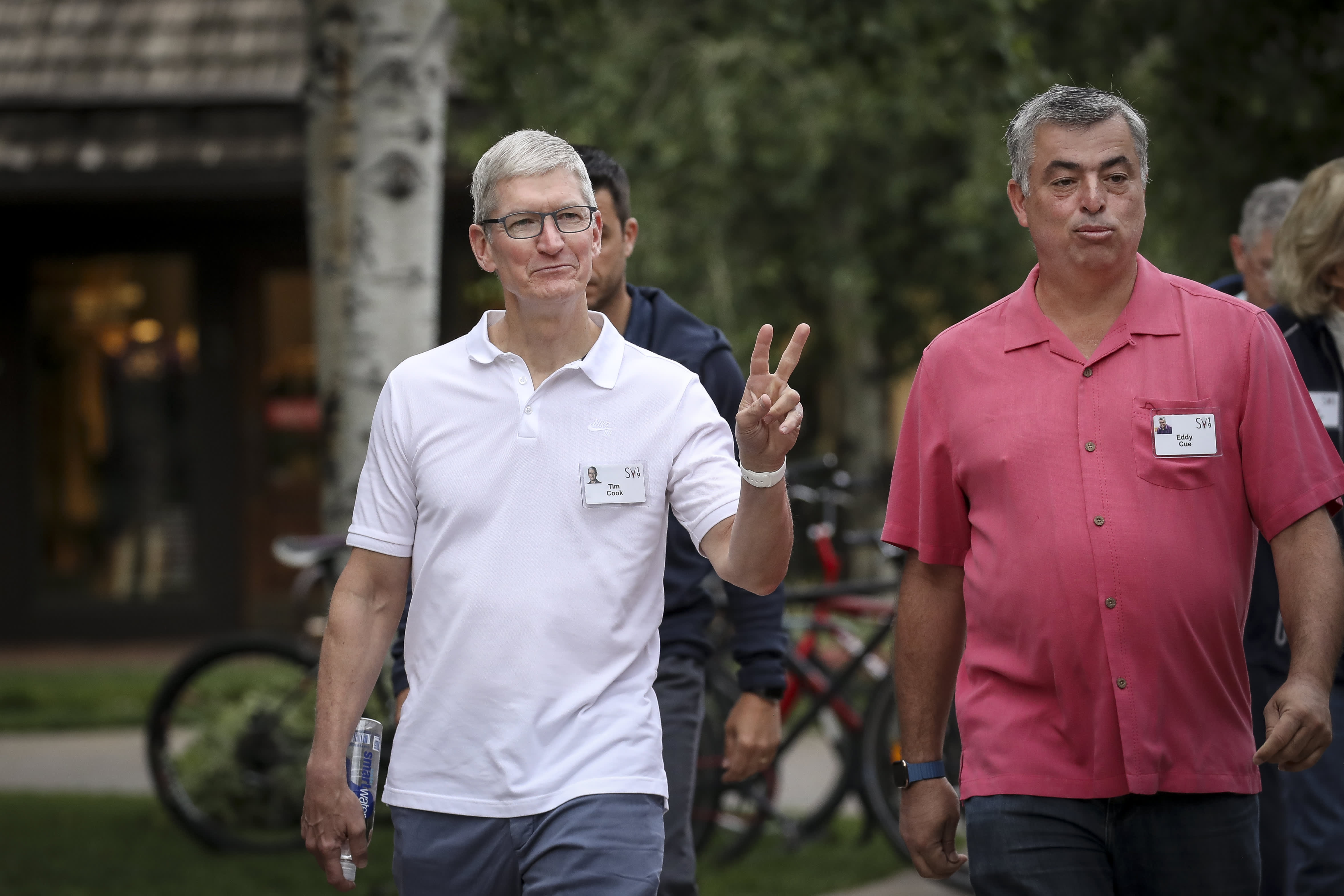Apple has had a strong 2019 so far, with the stock up more than 45% since the company hit a low after it announced a revenue shortfall on January 2. The iPhone maker continues to mint money, too, and has guided that it will book at least $52 billion in revenue when it reports earnings after the bell on Tuesday.
The most important number that drives Apple stock moves on earnings day is guidance — except for one time earlier this year, Apple nearly always hits its guidance, and disappointing guidance can hurt the stock. When Apple missed its guidance in January, it said that demand in China ended up being significantly lower than it expected, which is related to Trump’s trade war.
Expectations for guidance are “a low bar,” giving Apple room to surprise, analysts say.
“Particularly with many buy-side investors discounting growth in the smartphone market and in iPhone shipments, we see potential upside to investor expectations relative to F4Q19 guidance,” JP Morgan’s Samik Chatterjee wrote on Monday.
Analysts say that gives Apple a lot of room to overachieve, even as the company is coming off of of two straight quarters of year-over-year revenue decline and significant strategic issues, including a trade war between the U.S. and China in which Apple has become embroiled.
“Investor sentiment remains negative despite improving iPhone and Services data points, with low expectations for Sept. quarter suggesting a positive setup into earnings,” Morgan Stanley Katy Huberty wrote on July 22.
“UBS Evidence Lab data meanwhile supports general malaise in sentiment,” UBS analyst Timothy Arcuri wrote on Monday. “China demand/tariffs and services growth are predictably the top investor issues.”
“We think AAPL is well positioned to continue to surprise investors on the upside, driven by a confluence of better organic trends (specially in services) and low expectations regarding September quarter guide (clearly folks remain underweight here),” Evercore analyst Amit Daryanani wrote on July 24.
Here’s what analysts watching the stock are expecting, via a Refinitiv poll of analysts:
- EPS: $2.10 per share vs $2.34 last year
- Revenue: $53.40 billion vs. $53.26 billion last year
New mix of products
One key stat that analysts are watching for is the mix of products — historically, Apple’s iPhone has contributed over half of Apple’s total revenue, but it has been shrinking in recent months as sales slow and Apple’s other product lines, including the iPad, Apple Watch and Mac desktops, grow. Analysts are expecting $26 billion in iPhone revenue in the quarter, versus just under $30 billion last year for the product.
Last quarter, only 53% of Apple’s total $58.01 billion in revenue came from the iPhone. That’s because of Apple’s growing services business, including App Store fees and online subscriptions, which made up 19% of Apple’s revenue in the second-quarter, a record for the company. Analysts will be closely watching growth in the services business for strong growth — Huberty expects Apple will post services revenue 20% higher than a year ago, but the Street is looking for 15%.
“The combination of negative investor sentiment, the potential for a Services acceleration in June, and a low bar for September guidance keep us positively biased into earnings,” Huberty, the Morgan Stanley analyst, wrote in a July 22 note.
Many investors have hope that a 5G iPhone might spur a big wave of upgrades. Apple doesn’t talk about future products, but it did just buy Intel’s modem division for $1 billion, which included a lot of 5G-related intellectual property and employees who know how to work on 5G technologies. That deal will close later this year, but investors will be watching for 5G timing hints from the company’s leadership.
“We expect the narrative to shift more towards new services launch in 2H and to a 5G story heading into 2020,” Bank of America Merrill Lynch analyst Wamsi Mohan wrote in a July 24 note.
Also expect analysts to ask Apple CEO Tim Cook about head designer Jony Ive, a longtime Apple veteran who reported directly to Cook and headed up the company’s industrial design as well as interface design. The company’s announcement of his departure in June didn’t hit the stock much, but he was instrumental in many of Apple’s most important products and — right or wrong — many outsiders saw him as the guiding force behind its product philosophy.
Apple might also have to address its relationship with the Trump administration and its trade war with China.
Apple assembles its products in China, which is also the company’s third-largest market behind the Americas and Europe. Last week, President Trump said that he would not give Apple a waiver for Mac Pro parts imported from China, and then later said he had a “lot of liking for” Cook and that he expected Apple to announce a factory in Texas. (Apple didn’t respond to a request about Trump’s comments.)
